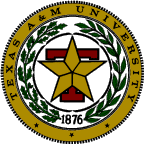
Schubert calculus
Geometry Seminar, Université Grenoble, 12 December 2005
Frank Sottile



 |
The Horn recursion in the Schubert calculus Geometry Seminar, Université Grenoble, 12 December 2005 Frank Sottile  
|
 |
Work of Klyachko and of Knutson and Tao in the 1990's established the Horn conjecture, which is a recursively defined set of inequalities among eigenvalues of hermitian matrices A, B, and A+B. This used representation theory, Schubert calculus, and combinatorics. A consequence is that other problems in mathematics have a similar Horn recursion, for example when is a Littlewood-Richardson number non-zero? Its geometric counterpart is to determine when a triple of Schubert varieties in a Grassmannian must meet. The partition indices of such a triple of Schubert varieties is called a feasible triple.
The answer is that a triple is feasible if and only if the three partitions satisfy Horn inequalities parametrized by all feasible triples for smaller Grassmannians. In brief, the Schubert calculus on a Grassmannian is controlled (to some degree) by the Schubert calculus on all smaller Grassmannians.
My first talk will begin by discussing the Horn inequalities for eigenvalues of hermitian matrices A, B, and A+B, and what they mean for geometry. Then I will discuss Belkale's geometric proof of the Horn recursion. This suggests that other related feasibility problems in Schubert calculus may have a similar recursive description.
My second talk will describe a generalization of this obtained in collaboration with Kevin Purbhoo of the University of British Columbia. We give a completely different Horn recursion in the Schubert calculus, involving cominuscule flag varieties. This yields a different set of valid inequalities for feasibility in Grassmannians, as well as two different (but equivalent) sets of inequalities for feasibility in the Lagrangian Grassmannian. In addition to giving these inequalities, we will also describe the geometry behind our proof.